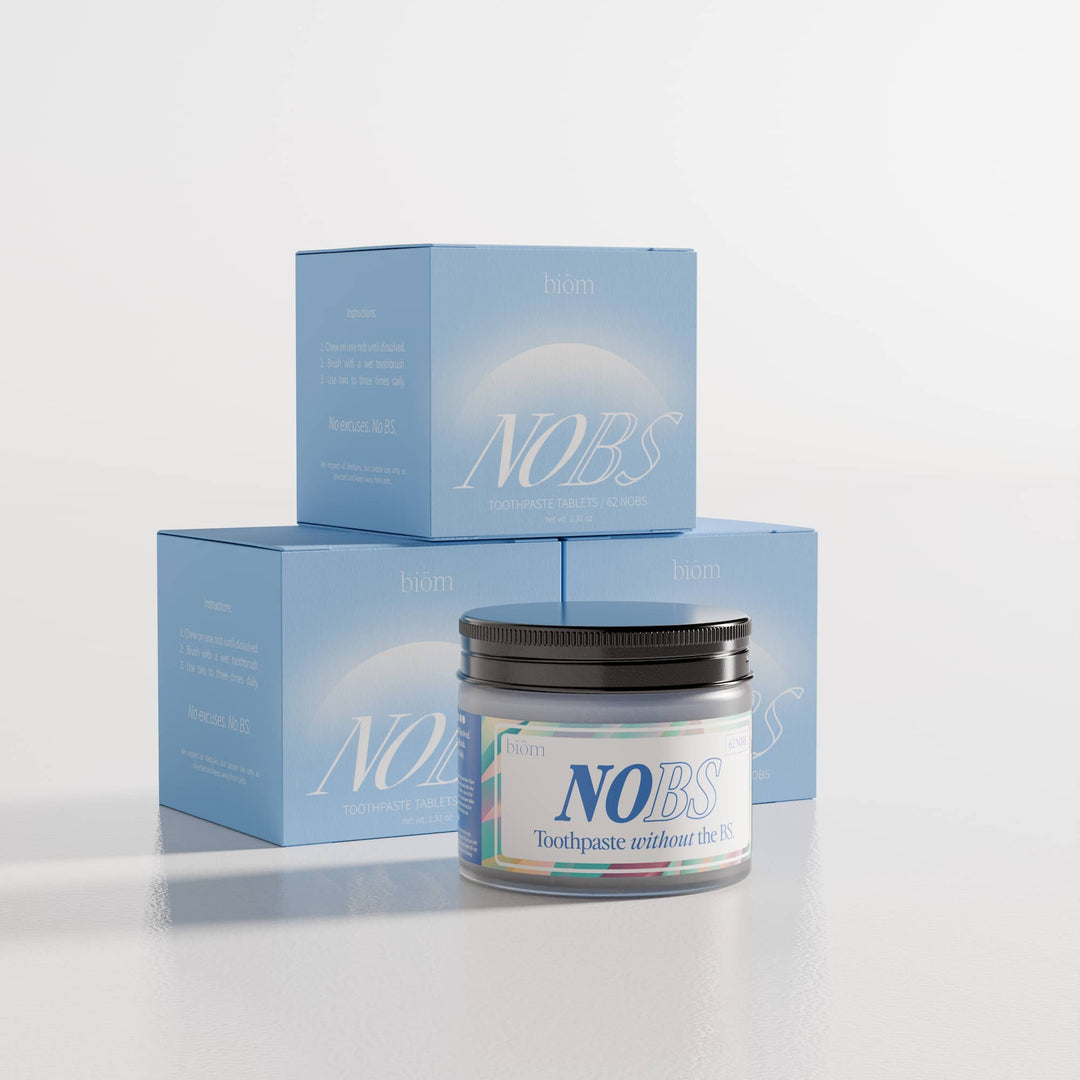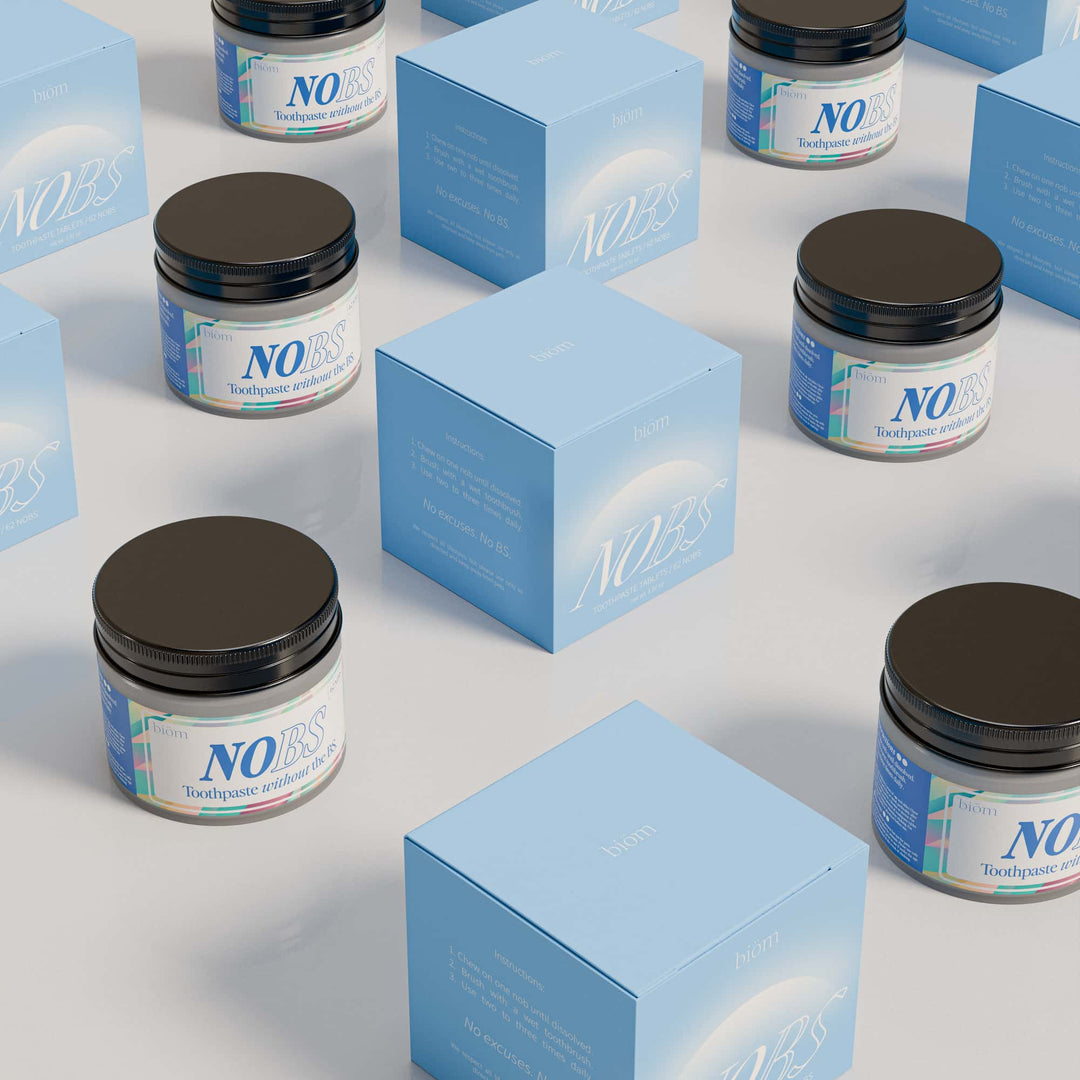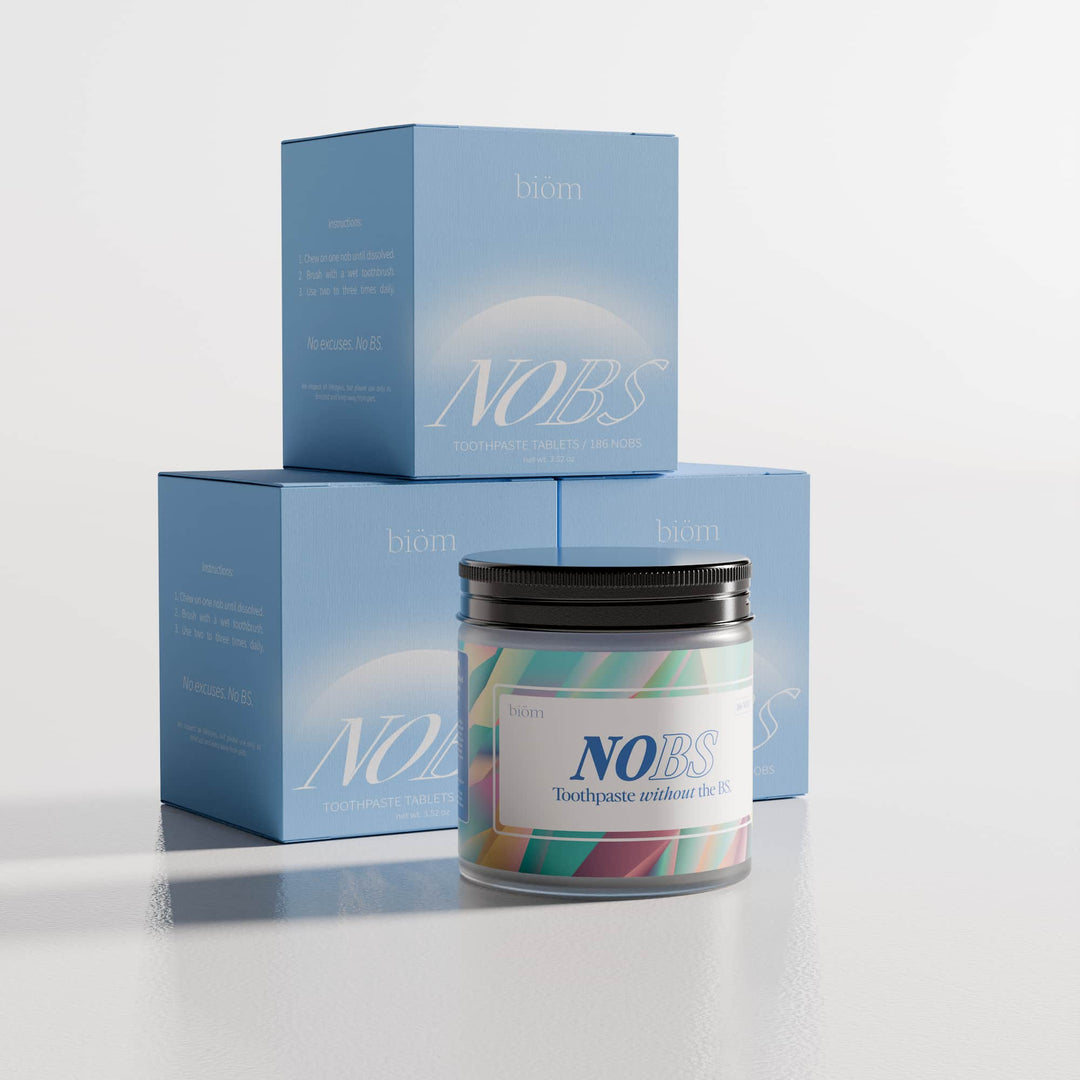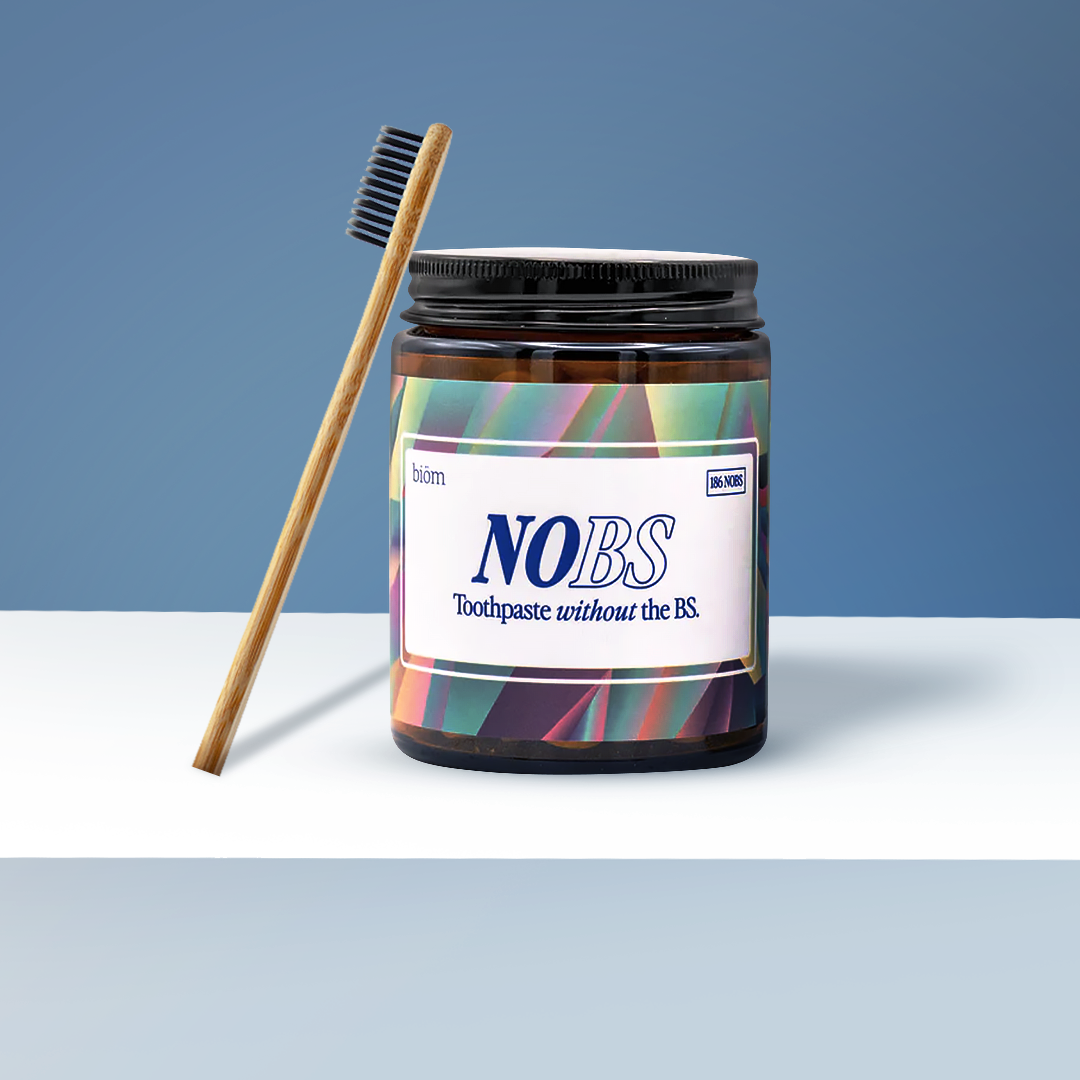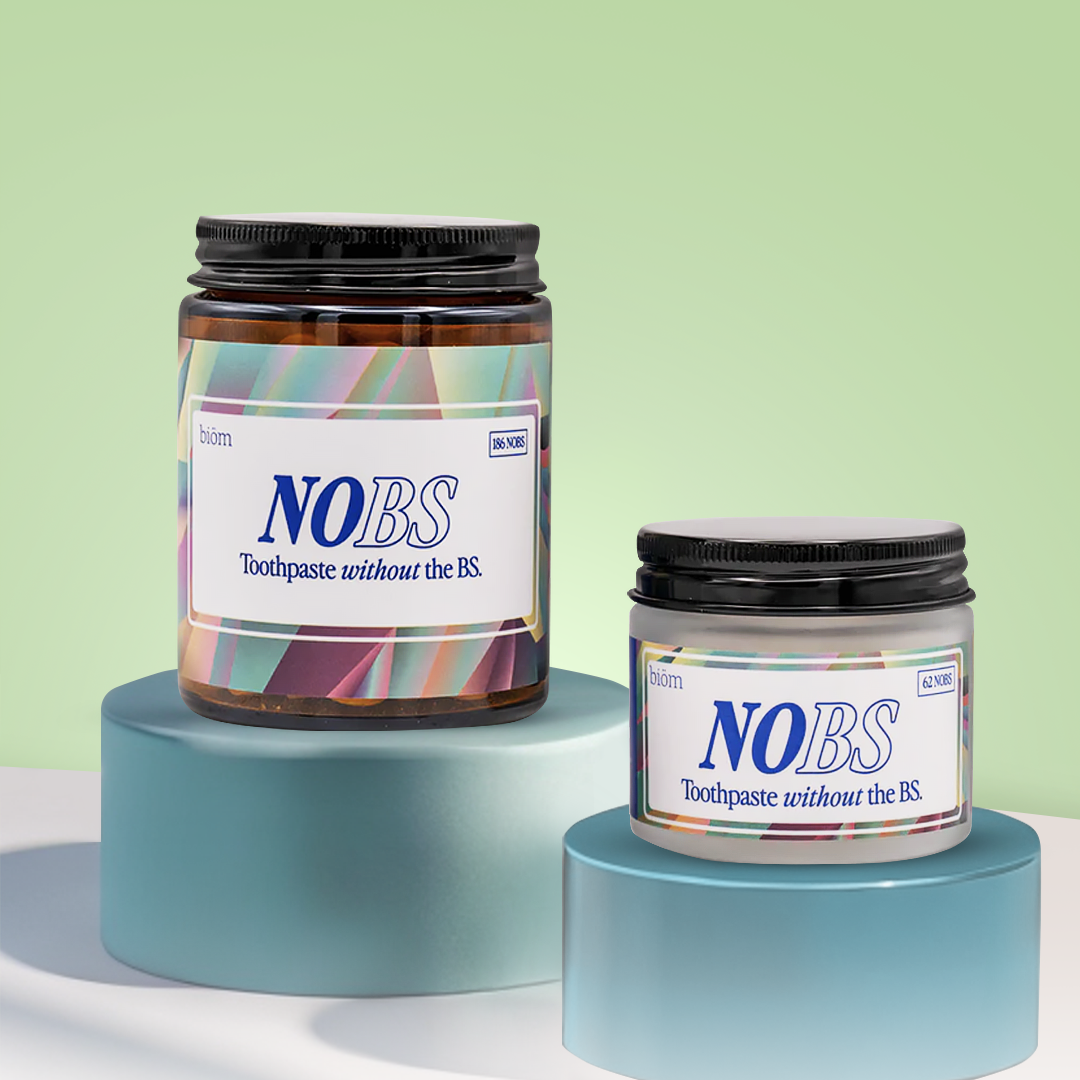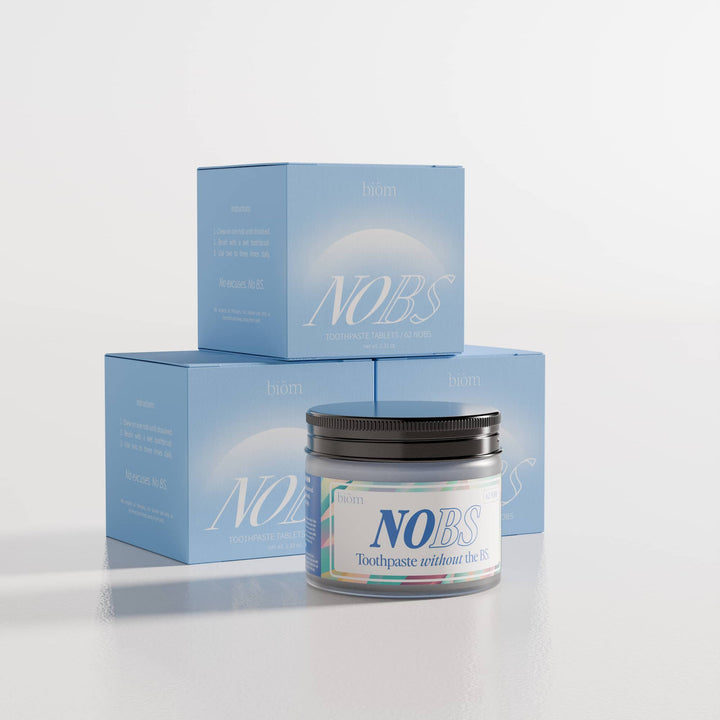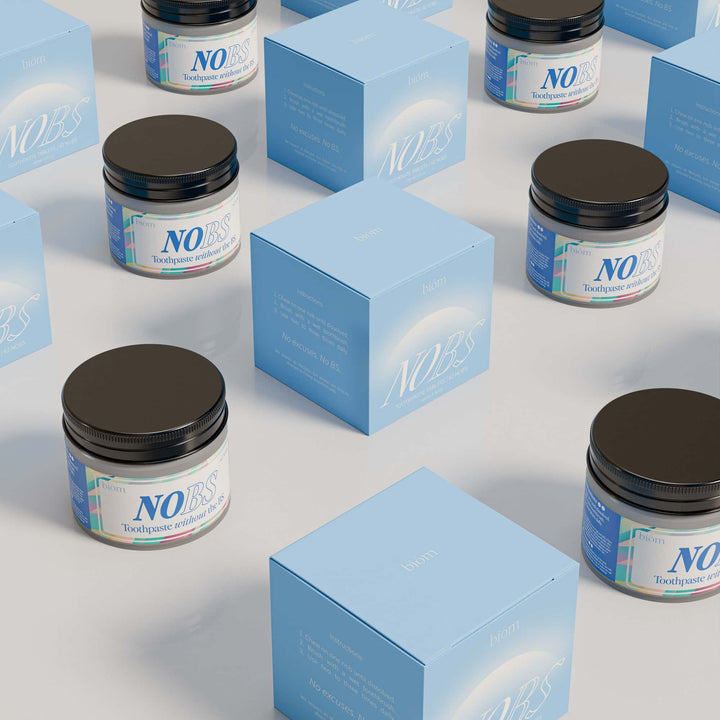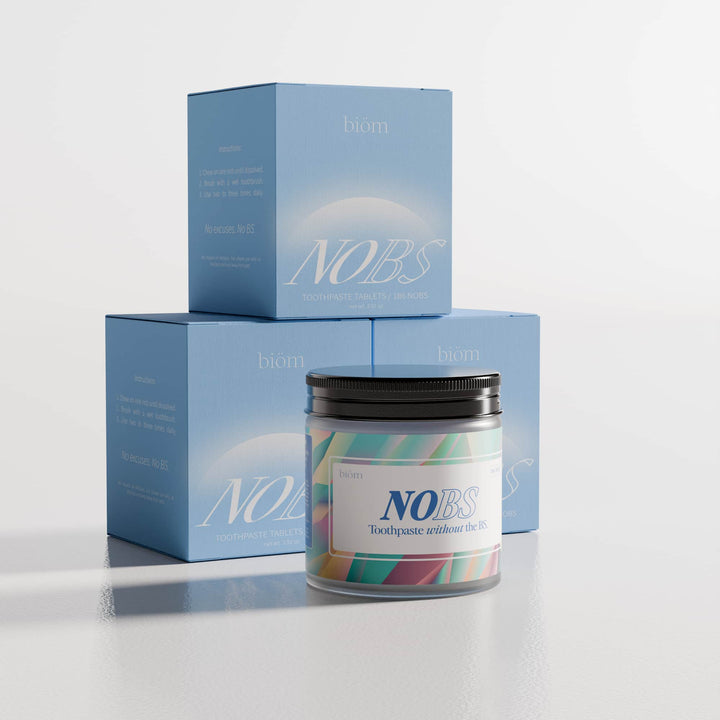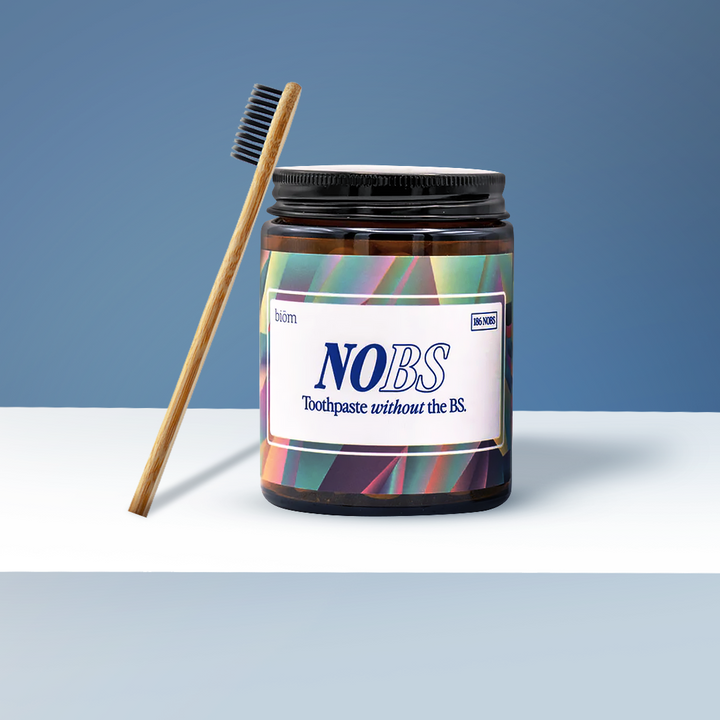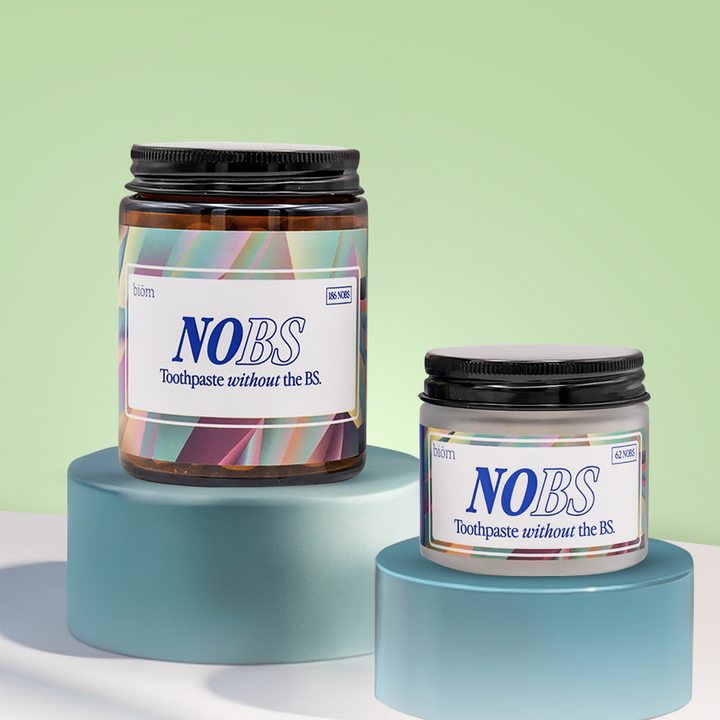What is Fluoride-Free Toothpaste?
Fluoride-free toothpaste is an alternative to traditional toothpaste that typically uses nano hydroxyapatite to protect your enamel.
Fluoride has been a gold standard in oral care products worldwide for removing cavities and strengthening teeth for years.
Recently, people have become more and more aware of the risks of fluoride and are searching for alternatives that deliver the same efficacy as fluoride without compromising their safety.
Nano-hydroxyapatite is a promising alternative that provides equal, arguably even better, results than fluoride.
This article will explain the risks of fluoride and explore the benefits of nano-hydroxyapatite as an alternative to fluoride in toothpaste.
Understanding Fluoride

Fluoride is the most prevalent mineral that can be found in nature.
It is naturally abundant in our food, such as fish, potatoes, eggs, and meat. It is also added to drinking water, toothpaste, and other dental treatments.
The effects of fluoride on oral health have been long documented. Dental researchers have recognized its role in preventing tooth decay and strengthening the teeth for years.
How Fluoride Works
Studies show that fluoride is excellent for preventing the development of initial signs of caries and remineralizing the enamel.
In the teeth, fluoride is used to substitute hydroxyapatite in demineralized areas of the enamel. It works by forming fluorapatite with calcium and phosphate which promotes remineralization and surrounds the enamel for protection.
Fluorapatite is highly insoluble, which makes it resistant to acid attacks.
In vitro studies show that fluoride has a lower capacity for remineralizing in enamel and dentin compared to nano-hydroxyapatite.
Aside from remineralization, fluoride is also effective in controlling the growth of bacteria.
The higher the fluoride concentration, the more effective it is in reducing the incidence of caries.
The Risks of Fluoride
While consuming fluoride from various sources can help reduce dental caries, it also carries risks that you should be aware of and avoid.
Fluorosis
Fluorosis is one of the side effects of overexposure to fluoride. Fluorosis only develops in early childhood when enamel formation is still in process.
Fluorosis is the formation of white and brown spots or lines on the surface of the teeth. In severe cases, this can result to enamel loss.
Children are advised to use no more than two pea-sized fluoride toothpaste and rinse it off instead of swallowing it.
Fluoride Intoxication
Another risk that comes with overexposure to fluoride is intoxication.
According to the American Association of Poison Control (AAPC), toothpaste ingestion is one of the leading causes of intoxication from fluoride. This is followed by mouth rinse and food supplements containing fluoride. More than 80% of these intoxication cases were of children.
Fluoride intoxication is categorized into two:
- Acute Effects
- Chronic Effects
Acute effects are described as follows:
- Nausea or Vomiting
- Hypocalcemia
- Involuntary muscle contractions
- Mixed metabolic and respiratory acidosis
- Coma and convulsions
Chronic effects are described as follows:
- Dental fluorosis
- Skeletal Fluorosis
- Hypersensitivity
- Gastric irritations
- Numbness, muscle spasms
- Congenital disabilities or cancer
Chronic effects are more reported than acute effects.
With all these possible risks of fluoride ingestion, it is natural that one finds a safer alternative for the whole family's safety.
What is Nano-Hydroxyapatite?

Nano-hydroxyapatite (nHA) is a synthetic version of the mineral that composes 97% of the enamel and 60% of the dentin, called hydroxyapatite (HA).
Studies suggest that nano-hydroxyapatite has excellent remineralization and bacterial reduction capabilities. Due to its biomimetic properties, it can form a synthetic layer of enamel around demineralized areas close to the natural enamel.
With the size of nHA ranging from 50-1000 nanometers, it can easily penetrate beneath demineralized areas, bond with plaque and bacteria, and repair early signs of tooth decay.
How Nano-Hydroxyapatite Works
Nano-hydroxyapatite works by showing promising results in in vitro and in situ studies for remineralization, reducing tooth sensitivity, whitening, and controlling plaque buildup.
Enamel Remineralization
Nano-hydroxyapatite is deemed to have significantly better results in remineralizing the demineralized enamel versus other remineralizing agents.
The nHA particles form into micro clusters, creating a synthetic enamel layer around the teeth.
Due to its size, it can easily penetrate exposed dentinal tubes and fill microabrasions on the enamel's surface.
Furthermore, nano-hydroxyapatite serves as a local reservoir of calcium and phosphate crucial for remineralization.
Reducing Teeth Sensitivity
Teeth sensitivity happens when the enamel wears out, and the dentin and dentinal tubes are exposed.
Hydroxyapatite crystals and other minerals are too large to penetrate the dentinal tubes. However, nano-hydroxyapatite is small enough to penetrate tiny dentinal tubes and bond together to form a layer of protection around the teeth.
Studies show that nano-hydroxyapatite is 23% more effective than fluoride in reducing teeth sensitivity.
Plaque Buildup Control
Fluoride has always been the standard for removing plaque formation and improving periodontal health.
In recent years, dental researchers have become more interested nano-hydroxyapatite's biofilm control.
Due to its biomimetic properties, nano-hydroxyapatite is able to inhibit the development of plaque while keeping the microbiome in balance.
nHA works by bonding with bacteria and plaque, hindering it from attaching to the surface of the enamel. Nano-hydroxyapatite, in particular, has a greater surface area where bacteria could attach.
Whitening
In vivo and in vitro studies suggest that nHA whitens the teeth through remineralization, which creates a smoother and brighter appearance around the teeth.
While whitening agents such as hydrogen peroxide and other dentifrices whiten the teeth mechanically or chemically, nHA works physiologically. It also fills holes and microabrasions that make the teeth look dull.
Safety
Fluoride-free toothpaste is not bad for you as it may offer several benefits that fluoride toothpaste does not. Since nano-hydroxyapatite is biocompatible, it is non-toxic and non-inflammatory. Even if ingested, it does not present any risks due to its biomimetic properties.
People of all ages can use nano-hydroxyapatite toothpaste safely.
Nano-hydroxyapatite toothpaste tablets are pre-dosed with enough concentration as advised per use.
Is toothpaste without fluoride good?
Yes, toothpaste without fluoride is good!
While fluoride is highly effective at preventing cavities by strengthening enamel and aiding in remineralization. Evidence shows that alternative ingredients like nano-hydroxyapatite can provide similar benefits. Nano-hydroxyapatite helps repair enamel, reduce sensitivity, and prevent cavities without fluoride.
Research also suggests that non-fluoride toothpaste can be a safer option for children who may swallow toothpaste or for individuals concerned about fluoride intake.
While fluoride-free toothpaste can maintain oral hygiene, its effectiveness largely depends on the presence of other active ingredients and proper brushing habits.
Ultimately, choosing the right toothpaste should align with your oral health needs and preferences, with professional advice if necessary.
Final Thoughts: Is Nano-Hydroxyapatite a Good Alternative to Fluoride Toothpaste?

Nano-hydroxyapatite is an excellent alternative to fluoride in toothpaste.
It delivers superior remineralizing, biofilm control, whitening, and teeth sensitivity reduction abilities without the risks of intoxication and fluorosis.
Do yourself a favor and pick up a nano hydroxyapatite toothpaste today!
Frequently Asked Questions
What is fluoride-free toothpaste?
Fluoride-free toothpaste is a dental hygiene product that does not contain fluoride, a mineral commonly found in conventional toothpaste. It is typically formulated with safe ingredients like nano hydroxyapatite to clean and remineralize teeth.
Why would someone choose fluoride-free toothpaste?
People may choose fluoride-free toothpaste for various reasons, including concerns about excessive fluoride intake, allergies to fluoride, or a preference for natural toothpaste.
Is fluoride-free toothpaste safe for children?
Yes, fluoride-free toothpaste with nano hydroxyapatite toothpaste is safe for children.
Can fluoride free toothpaste cause cavities?
No, fluoride-free toothpaste does not directly cause cavities, but it may lack protection against demineralization if without nano hydroxyapatite. To protect your teeth, use a toothpaste with a remineralizing agent like nHA, which helps strengthen enamel and prevent decay.
Are there any potential risks associated with fluoride-free toothpaste?
Generally, fluoride-free is considered safe for most people. However, it may not provide the same level of cavity protection as prescription fluoride toothpaste. Be sure to talk to your dentist if you are prone to tooth decay.
Can fluoride-free toothpaste effectively prevent cavities?
Yes, fluoride-free toothpaste with nano hydroxyapatite can prevent cavities.
Why shouldn't you use fluoride toothpaste?
Some individuals avoid fluoride toothpaste due to concerns about overexposure, which can lead to dental fluorosis or other health issues. Alternatives like nano-hydroxyapatite toothpaste provide effective cavity protection and enamel repair without fluoride. Avoiding fluoride is also preferred by people who prioritize natural or non-toxic oral care products.
What happens when you stop using fluoride toothpaste?
When you stop using fluoride toothpaste, your teeth may lose the additional protection fluoride provides against cavities. Fluoride strengthens enamel and helps remineralize areas affected by early decay, reducing the risk of cavities. Without fluoride, you may need to use an alternative like nano-hydroxyapatite toothpaste to maintain enamel strength and cavity prevention effectively.
Which toothpaste does not use fluoride?
Toothpastes like NOBS Toothpaste Tablets do not use fluoride, opting for alternatives like nano-hydroxyapatite to strengthen enamel and protect against cavities. These options are ideal for those seeking fluoride-free dental care. Always check labels to ensure the toothpaste meets your oral health needs.
What happens if you stop using fluoride toothpaste?
If you stop using fluoride toothpaste, you may lose its cavity-preventing benefits, especially if your diet or oral hygiene practices aren't optimal. Switching to a fluoride-free toothpaste with remineralizing agents like nano-hydroxyapatite can still protect and strengthen your teeth effectively. Proper oral hygiene habits remain crucial for maintaining dental health.
Is toothpaste without fluoride better for your teeth?
Toothpaste without fluoride can be equally effective if it contains proven alternatives like nano-hydroxyapatite, as found in NOBS Toothpaste Tablets. It’s a good option for those concerned about fluoride exposure or seeking natural solutions. Choosing the right toothpaste depends on your specific dental health needs and preferences.


